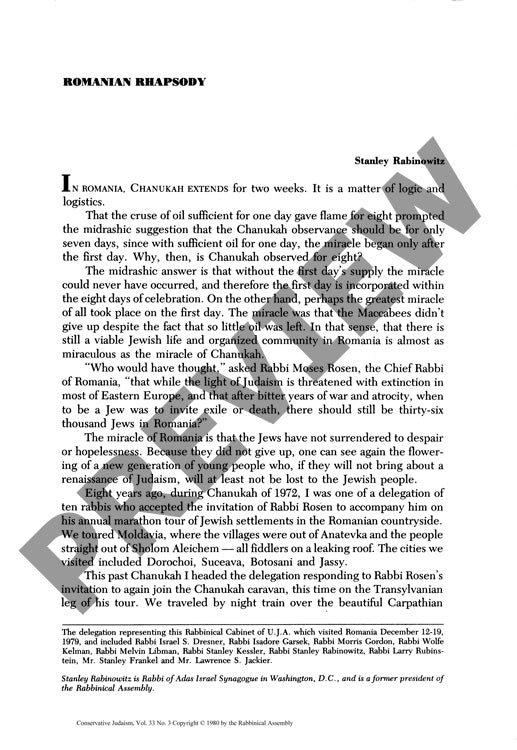Romanian Rhapsody
Couldn't load pickup availability
In 1979, while most Eastern European Jewish communities had vanished or faced severe persecution under Communist rule, Romania's 36,000 Jews maintained a vibrant religious and cultural life with remarkable freedoms. A rabbinical delegation's two-week tour across Transylvanian cities—including Arad, Oradea, Cluj, and Turgo-Mures—revealed Jewish communities openly practicing their faith, publishing religious materials, teaching Judaism, and operating communal institutions. Through direct observation, historical analysis, and interviews with community leaders, particularly Chief Rabbi Moses Rosen, the investigation illuminates how Romania's Jewish population achieved this exceptional status within the Communist bloc. The anomaly stemmed from Romania's strategic pursuit of Western connections, with Jewish communities serving as vital diplomatic and economic bridges to Israel and the United States. Chief Rabbi Rosen proved instrumental in sustaining this delicate balance, implementing innovative approaches like contemporary musical performances and inclusive community programs to maintain Jewish life while satisfying Communist authorities. Although Romanian Jewry confronted significant challenges, including demographic decline and emigration restrictions, their successful adaptation represents a unique case study in Jewish survival under Communism, standing in stark contrast to the severe restrictions faced by Jewish communities in neighboring countries.

More Information
-
Physical Description
-
Publication Information
Published 1980
ISBN
-
Publication Credits
Stanley Rabinowitz

